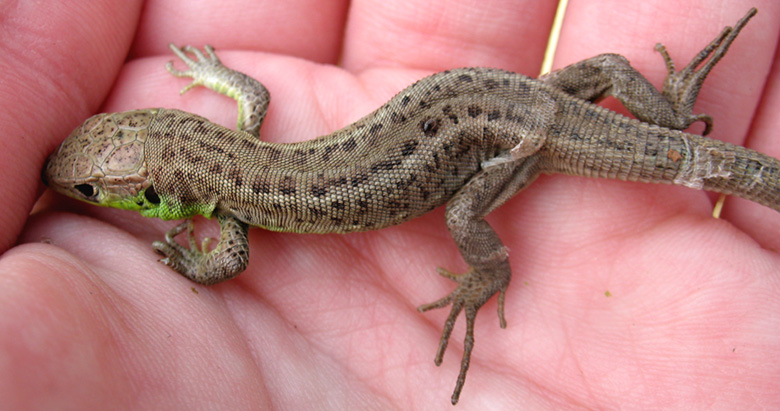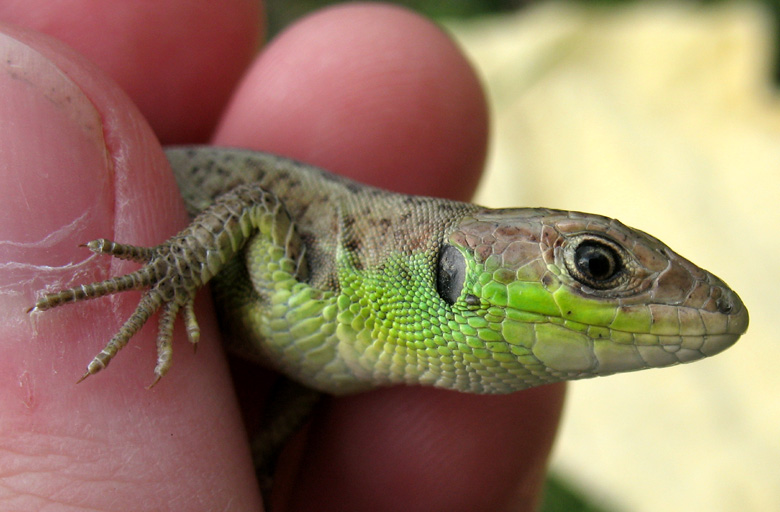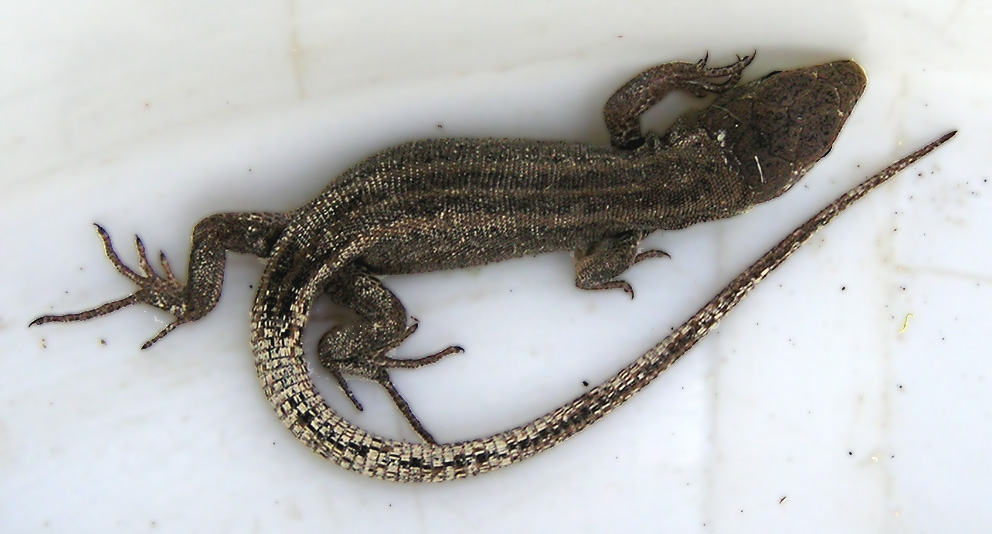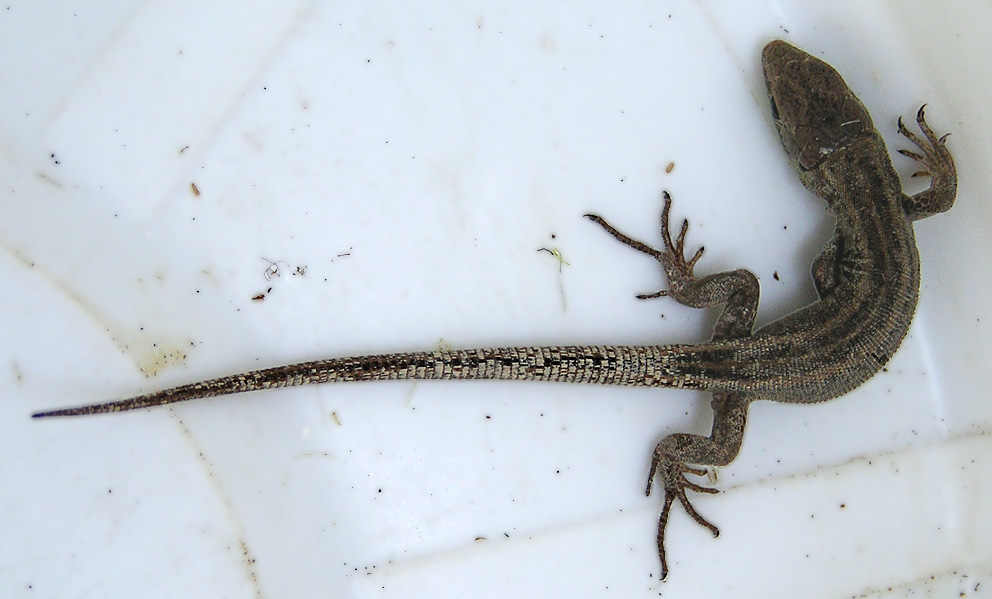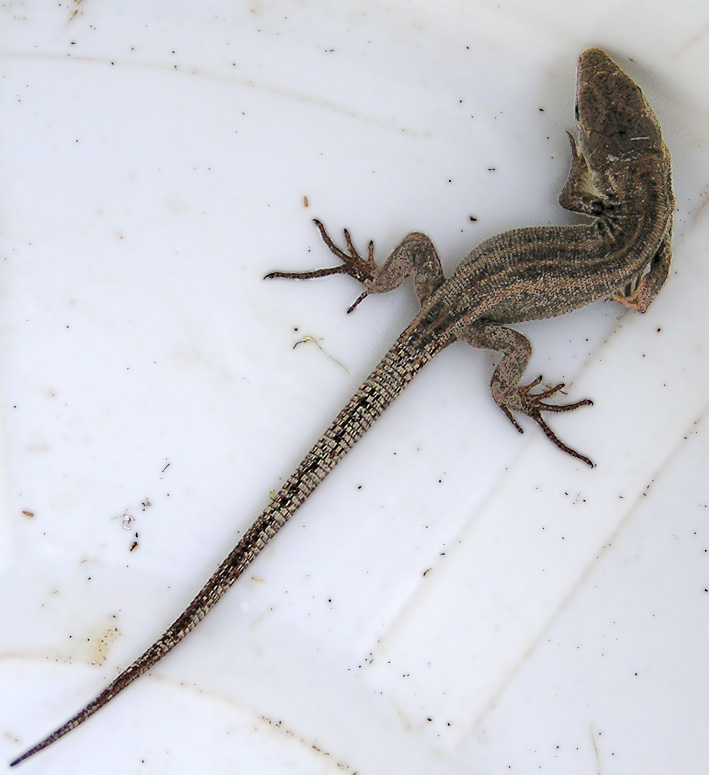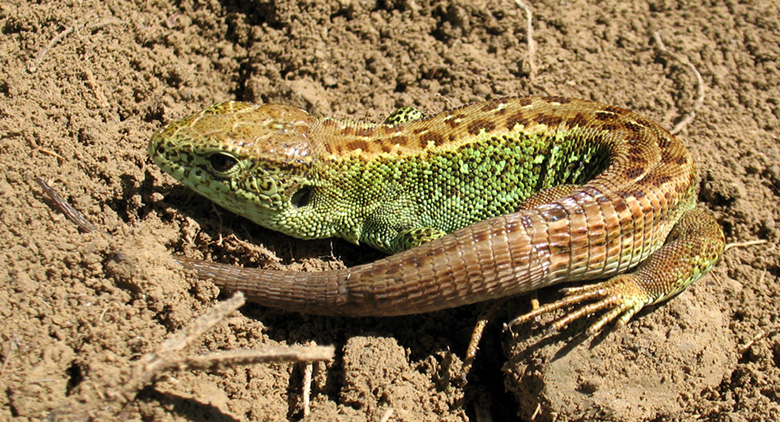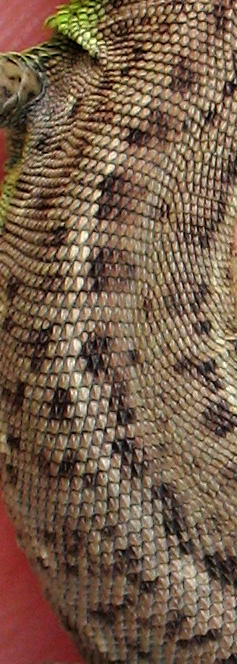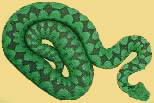 |
Green
Lizard
Sand Lizard
Slow Worm
Details
Albums
Adults usually 9 cm from snout to vent, usually smaller, rarely larger, the tail is about 1.3-1.7 times body length. A stocky, short-legged lizard. Males have a broader head than females. Colouring extremely variable: usually a dark band or series of marks along center of back, may contain darker blotches, lighter streaks and light spots. Most animals have dark spots, mottlings or ocelli on sides. Males have green, green-yellow or greenish flanks, some almost entirely green with a dull central band. Females are brown or grey, rarely with green, the dark central band tends to be broken up. Underparts are whitish, yellow or greenish, sometimes with darks spots (especially in males). Young often have a weaker version of adult markings, but no green. Melanistic (all black) individuals can occur.
Lives in a wide variety of fairly dry habitats: meadows, steppe, field-edges, road embankments, grassland with bushes, rouh grazing, hedgerows, gardens, also on moister habitats, even sandy habitats. More inteligent than many lizards and capable of changing behaviour rapidly in response to circumstances.
Feeds on insects.
Males fight vigorously in the breeding season and guard their mates after copulation, although both sexes tend to have several partners each year. Femlase lay 5-6 (4-14) eggs. Young hatch in 7-12 weeks and are 2-3.5 cm long from snout to vent. Males mature in 2, females in 3 years.
May live 12 years in the wild.
Left:
Young
Sand Lizard
after sheding its skin
Detail:
"keeled" scales
